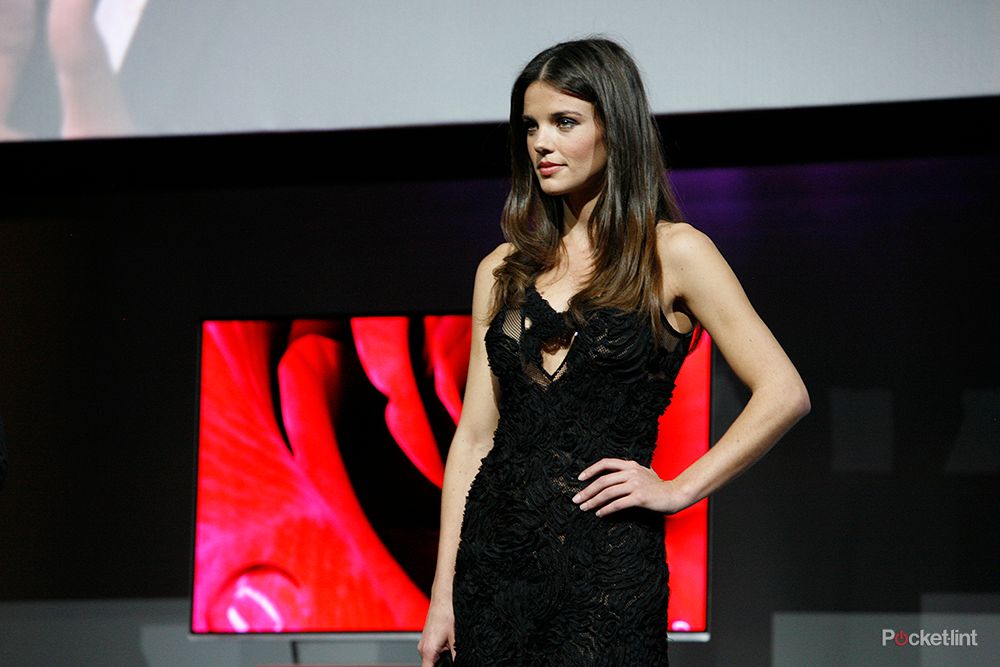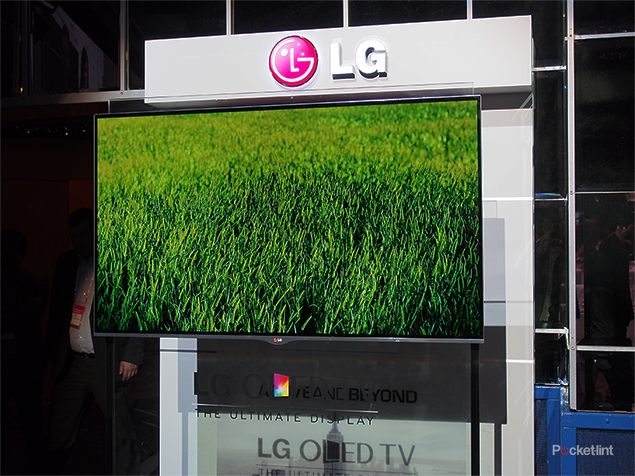Every year display technology tags an extra medal to its trophy. Since HD went mainstream we’ve seen 3D, faster refresh rates and a variety of display technologies that have added to the upward curve of what’s possible in the home.
For 2012 it looks as though OLED is making its first major break, or at least certainly having a bash at it. Both LG and Samsung showed off OLED televisions at the Consumer Electronics Show back in January and, we should add, got a lot of praise and attention for it.
Organic Light Emitting Diode, to give its acronym name the full dues, offers distinct advantages over its LCD cousins: a better contrast ratio, faster refresh rates, wider angles of view, lower power consumption and brighter colours. As OLED doesn’t require backlighting, unlike LCD or LED displays, the overall thickness of the screen can also be squeezed down to new levels of tininess.

Sounds like nobody can lose, right? Well, with an earmarked price tag of £9,000 upon launch the 55-inch LG 55EM9600 OLED TV is way out of most people's price range. LG knows it just as well as anyone else. And it’s a big hurdle that most won’t get past – at least not for the next three years or so when the development costs decline.
So is OLED worth such a premium? Having spent more time with the 55-inch LG OLED 55EM9600 screen we can’t deny it is impressive.
It’s the black levels that are particularly stand out. Presented in a dimly-lit room the blacks were real deeeep; deep like the Mariana Trench. LG's chosen venue, the Salle des Etoiles in Monaco, had its own tricks too: the huge mechanical roof opened up and even in daylight – and we’re not talking a predictable display room here, this is out in the open and exposed to the Mediterranian sun kind of stuff – the sets on display still looked awesome. £9,000 awesome? Well that depends on how much of a home cinema geek you are.
The design, too, means the 55EM9600 ought to look ace mounted on a wall. The screen’s 4mm thickness should be less obtrusive than a (huge) picture frame. The use of carbon fibre reinforced plastics also means the 55-inch screen is a mere 10kgs in weight. All sounds rather show-off, yet the understated design isn’t pulling any punches – it’s a functional, small-bezel, unfussy set that lets the screen do the talking.

The viewing angle is also significant: we’re talking almost any degree of horizontal or vertical view and the picture, right down to the black levels and colour vibrancy, looks just the same as front-on viewing. That’s one area where OLED really does shine. Though, from a practical point of view, that may be irrelevant to many who won’t stand side-on to watch their TV.
That’s not to say it doesn’t pose one or two concerns: the showreel that LG has adopted is all about vivid, bright colours that look hyper-real. It’s all just a bit too much at times. Without further footage available to take a look at, it’s difficult to assess how OLED’s colour accuracy and vibrancy will be for movie playback and the like.
LG claims its WRGB technology – which adds a white subpixel layer to the existing red, green and blue array – will “perfect the colour output” and, in combination with the Colour Refiner technology, is said to enhance the image to be the most “vibrant, natural and comfortable to the human eye”.
However, Pocket-lint's own TV guru, Mr Ian Morris, still has some concerns:
"Seeing these TVs with manufacturer-chosen demo material is all well and good, but until I see an episode of Neighbours on the thing, it's impossible to tell if it's actually producing a good picture, or just one that numbs the brain with bright colours."
And as LG won't release product to the press until availability later in the year (Q4) we'll just have to wait and see. Of course the 55EM9600 will come with all manner of picture adjustment tools to cater for all types of media, so we hope it can output a more muted, natural palette too.
Gamers have plenty to be excited about too. The 0.02s response time is said to be “100 times faster” than the current best LCD TVs. And judging from the showreel’s dancer twirling around on the screen there’s no doubt it is super smooth. Still, without faster panning or subjects flying by at pace there’s no way to yet assess just how impressive the overall experience will be. The same goes for 3D.

Despite all this good stuff, we have to ask: does anyone really care? Screen tech, certainly at the current top end, is already at an impressive level.
As much as OLED sets out to improve on current standards there’s still the old argument that a decent plasma screen may deliver all that’s necessary for an avid home cinema fan. The price of the long-since abandoned Pioneer Kuro range on eBay is part testament to that.
LG has its own ideas. The 55-inch sets out to impress, and it's knowledgeable, high-end users that will be most keen. But there’s more around the corner for a broader audience too: larger screens and a “full range” will follow in the next couple of years.
George Mead, LG’s Head of Consumer Marketing: Home Entertainment, says that OLED technology is, “without a doubt the future”, adding that it had taken the company “six years to perfect”.
And with the likes of Panasonic suffering financial woes in its televisual department for 2011-2012 and Sony all but ceasing its OLED telly line, it’s looking like a Korean OLED race.
Samsung is LG’s only main OLED competitor, though Mead adds that LG is “more than confident with the WRGB technology to give the very best picture”.
From what we’ve seen we can’t say he’s wrong either – the LG 55EM9600 delivers great picture and motion and will, despite its hefty price, light up the eyes of those in the market for a high-end set.
For the rest of us on more slender budgets, or for those who can’t tell the difference between LCD and our ABCs, the OLED movement might have less to no significant impact.
Samsung: it’s your move…
Is OLED the future of televisions?

